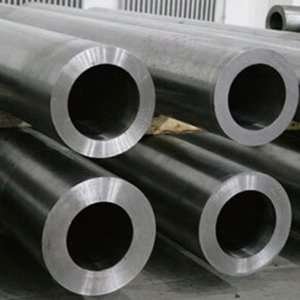Type 416 (UNS S41600/1.4005)
- Highest machinability of all stainless steel.
- Limited corrosion resistance and low formability and weldability.
- Provides significant flexibility in machining applications.
- Capable of reaching the highest strength hardness and resistance to wear of all stainless alloys.
Description
Overview:
Type 416 stainless steel is martensitic hardenable chromium steel. The added manganese-rich sulfides prevent build up on cutting tools during the machining process and act as chip breakers, making it the highest machinable steel of all stainless steel, with a machinability of 85%. It is a great selection for cutting tools after heat treated.
Although the additional sulphur improves its non-galling characteristics, it reduces corrosion resistance and lowers formability and weldability.
Common Names:
Stainless steel type 416 is commonly known as Chromium steel.
Executive Standards/Grades:
- JIS: SUS 416
- ASTM: A582
- DIN: 1.4005
- UNS: S41600
- SUS: SUS416
- Euronorm: X12CrS13
Chemical Properties:
Type 416 stainless steel has the following chemical composition:
- Carbon – 0.15%
- Manganese – 1.25%
- Chromium – 12-14%
- Sulphur – 0.15%
- Phosphorus – 0.06%
- Silicon – 1.00%
- Iron – 85%
- Nickel – 8.0-10.5%
- Molybdenum – 0.6%
Mechanical Properties:
- Hardness (HRB) – 262
- Elongation (%) – 30
- Yield Strength (Mpa) – 275
- Tensile Strength (Mpa) – 517
- Poisson’s Ratio – 0.27-0.30
Physical Properties:
- Density (x1000 kg/cm3) – 7.8
- Elastic Modulus (GPa) – 200
- Thermal Conductivity (W/m.K) – 24.9 at 68°F
- Specific Heat (J/kg.K) – 460 at 68°F
- Electrical Resistivity – 570
Key Features:
- Martensitic free machining stainless steel that can be hardened by heat treatment to obtain high strength and hardness
- Readily used in its highly tempered state
- Better machining characteristics, but lacks in corrosion resistance
- Unsuitable for marine applications or any situations where exposed to chloride
- Provides the highest machinability of any stainless steel.
- Hardened to obtain maximum resistance to corrosion and smooth surface
Forms Available:
Stainless steel type 416 is available in different forms such as:
- Sheet
- Plate
- Bar
- Wire
- Tube
Applications:
Because of its properties, stainless steel type 416 has a wide range of applications including:
- Valves, pump shafts, and motor shafts
- Parts of washing machines
- Gears, bolts, nuts, and studs
- Automatic screw-machined components
Possible Alternatives Grades:
Type 416 stainless steel has some possible alternatives that can be used. Such as:
- 410 – Better corrosion resistance and formability.
- 303 – Better availability. Type 303 is non-hardenable.
- 182 – Better “soft magnetic” performance for solenoid shafts, non-hardenable.
FAQs:
- How is the heat resistance of stainless steel type 416?
Type 416 stainless steel can be annealed at 1500-1650oF for half an hour, then cooled at 86oF for an hour and air-cooled. Because type 416 has poor ductility, it should not be tempered at temperatures between 750-1070oF. The benefit of heat treating type 416 is the increase in material hardness.
- Is type 416 weldable?
Type 416 stainless steel provides poor weldability. For welding, it needs pre-heating at 390-570oF, then re-hardened, annealed or stress relieved at temperatures of 1200-1250oF.
- Is type 416 resistant to corrosion?
Type 416 stainless steel provides limited corrosion resistance, but hardening and tempering this type of stainless steel brings corrosion resistance to its optimum.
Get A Free Quote Now!







